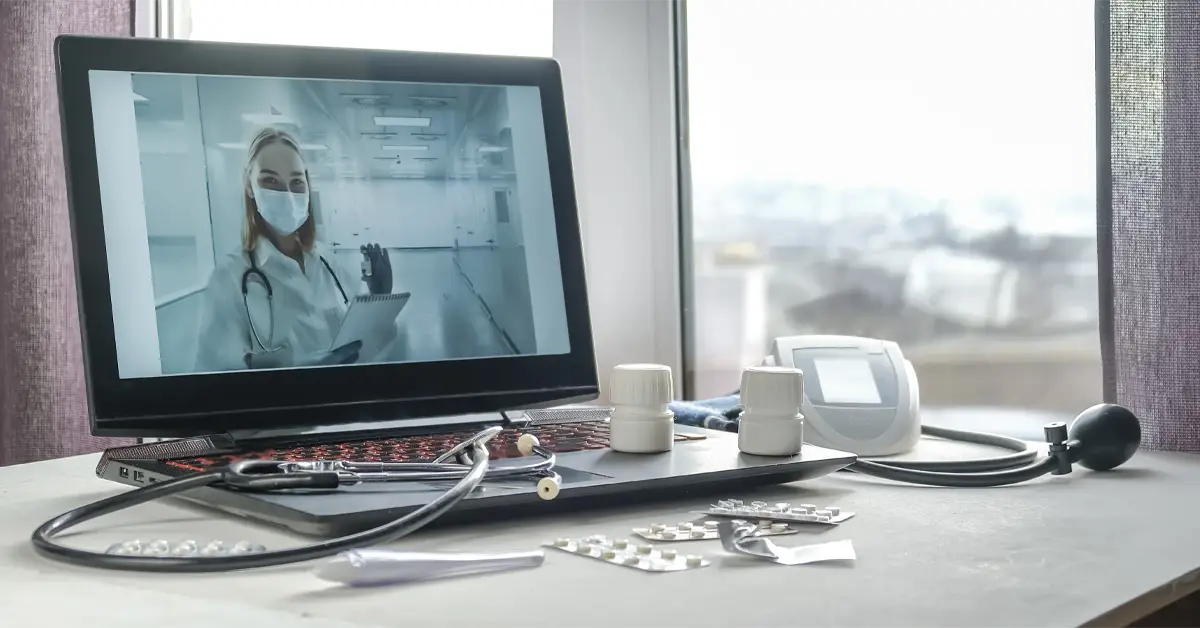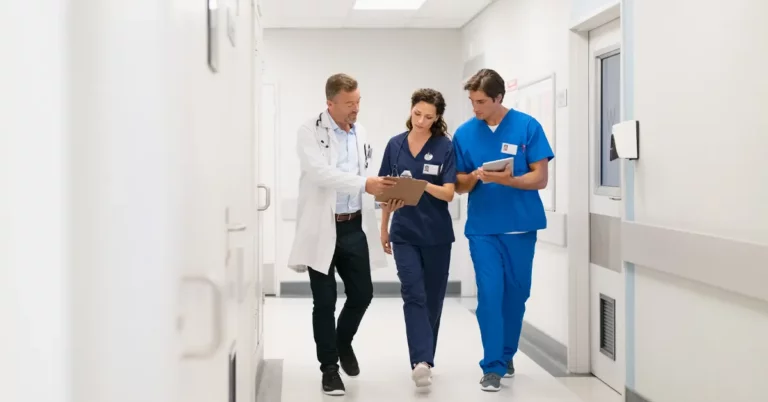Are you a doctor who has patients that are hard to reach, move around a lot, or need to see multiple specialists? If so, I’m sure you’ve struggled with care management. Thankfully remote patient monitoring is a growing trend in the healthcare industry. It allows you to provide patient care remotely, consequently improving patient outcomes, reducing emergency room visits, and lowering overall healthcare costs.
Here are five benefits of remote patient monitoring and how physicians can begin implementing it today.
1. Increased Efficiency
RPM allows healthcare providers to monitor a patient’s health on an ongoing basis without the need for in-person visits, which can save time and resources, all the while improving quality of life.
RPM can also provide real-time data and alerts, which can help healthcare providers to quickly identify potential problems and take timely action. Lastly, it enables patients to self-monitor their health, which can reduce the workload for healthcare providers and allow them to focus on more complex cases.
2. Improved Patient Safety
As a doctor, remote patient monitoring will help you improve patient’s safety because it allows healthcare providers to monitor a patient’s health on an ongoing basis, which can help to identify potential problems early on and provide timely interventions. RPM can prevent the need for more invasive treatments or hospitalizations, which can reduce the risk of complications and adverse events.
Because RPM provides real-time data and alerts, it can help healthcare providers quickly respond to changes in a patient’s condition and take appropriate action. RPM can help prevent potentially dangerous situations, such as a sudden decline in a patient’s vital signs.
3. Better Coordination with Other Health Professionals
Remote patient monitoring (RPM) can help to improve coordination between healthcare providers by allowing them to easily share patient data and communicate with each other in real-time. RPM can help to ensure that patients, especially those with chronic conditions, receive quality of care, even when they are being treated by multiple healthcare providers.
For example, if a patient is being treated by a primary care physician and a specialist, RPM can help to facilitate communication and coordination between the two providers. RPM can help avoid duplication of tests and treatments and ensure that the patient’s care plan is consistent and effective.
4. Improved Patient Engagement
A 2002 Coulter study finds that patient engagement is crucial to ensure high-quality medical services. Therefore it is imperative that healthcare providers find ways to ensure high patient engagement.
Thankfully, because of RPM, patient monitoring becomes easier for physicians because it gives patients access to care by having devices such as weight scales, blood pressure monitor, to name a few, to track their own health data. This can help improve patient engagement and empower patients to take an active role in their own care. Such cooperation will then make it easier for doctors to provide the best quality of care.
5. Reduced Risks of Medical Mistakes
Do you know that medical errors are the 3rd leading cause of death in America? Therefore reduction of medical mistakes is crucial for both patients and doctors.
When doctors are able to remotely monitor and treat their patients, there is less chance for errors in diagnosis or treatment. This includes errors made by staff members, who may be more likely than doctors to make mistakes due to fatigue or stress. Remote monitoring also reduces the risk of data loss or corruption, meaning that information about your health can be safely stored in your doctor’s system instead of being misloaded on paper charts or hard drives.
Remote monitoring also helps protect patient data from cyber-attacks and unsecured transmissions over insecure networks—two common ways that hackers gain access to sensitive information like personal health records (PHRs).
How to Implement RPM in Your Practice
Now that you understand what the benefits of remote patient monitoring are, it is time to learn how to implement RPM in your practice. There are a few different ways to go about this, so choose the method that works best for your situation.
Choose the right RPM software and hardware
There are many different types of RPM software and hardware available, and each one offers a unique set of features and capabilities. Choose a tool that is compatible with your existing systems and equipment and offers the features and capabilities you need to effectively monitor your patients.
Train your staff on how to use RPM
RPM is a new technology, and your staff will need to learn how to use it effectively. Provide training and support to ensure that your staff are comfortable and confident using RPM to monitor patients.
Establish protocols for using RPM
Develop protocols for using RPM to monitor patients, including how to collect and interpret data, how to respond to alerts, and how to communicate with patients and other healthcare providers.
Consider regulatory requirements
RPM is subject to various regulatory requirements, such as HIPAA and state-specific privacy laws. Make sure you are familiar with these requirements and have the necessary policies and procedures in place to protect patient privacy and data security.
Monitor and evaluate the effectiveness of RPM
Monitor the effectiveness of RPM in your practice and make any necessary adjustments to improve its performance. Regularly evaluate the impact of RPM on patient outcomes and satisfaction, and use this information to refine your approach to using RPM in your practice.
Reap the Benefits of Remote Patient Monitoring with DrKumo
DrKumo is a leading provider of remote patient monitoring (RPM) technology solutions. DrKumo’s RPM technology solutions enable medical professionals to remotely monitor patients’ vital signs, as well as track and store data on the patient’s health. Additionally, the company’s advanced technology allows for real-time alerts when an abnormal reading is detected, thus allowing medical personnel to act quickly and appropriately.
DrKumo’s RPM technology solutions offer a range of features designed to ensure patient safety, from basic monitoring and alerts to cybersecure transmission, to more sophisticated artificial intelligence-driven diagnostics and analytics. Our technological solutions are easy to use and connect to your mobile device, enabling patients to measure vital signs and securely transmit this data to healthcare providers via a secure cloud-based platform supported by advanced cybersecurity measures. The future of healthcare is here today.
Takeaways
Remote patient monitoring (RPM) is an innovative tool that can provide numerous benefits for both healthcare providers and patients. By implementing RPM in your practice, healthcare providers can increase patient satisfaction and improve access to care. RPM allows medical professionals to monitor patient health and vital signs remotely, without requiring the patient to physically visit the practice.
This means that healthcare providers can identify potential health problems before the patient arrives in the office, allowing them to provide faster, more effective treatment. Additionally, RPM allows healthcare providers to provide better follow-up care and can help reduce readmission rates. Ultimately, RPM allows healthcare providers to provide better quality care while also improving their efficiency.
Implementing RPM in your practice can have a profound impact on the quality of care that you provide to your patients. If you’re interested in learning more about RPM and how it can benefit your practice contact DrKumo now.








